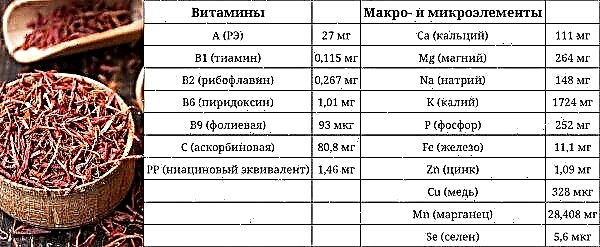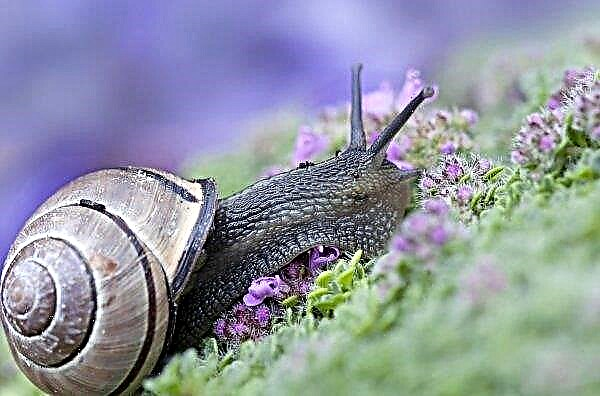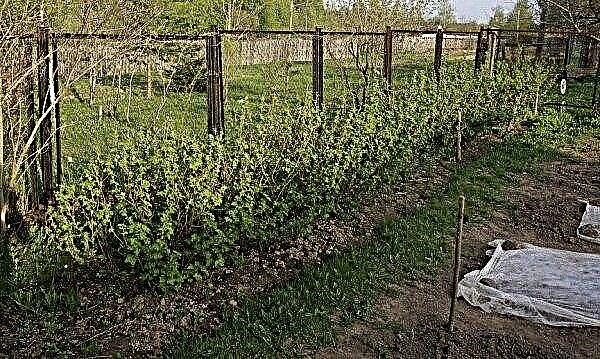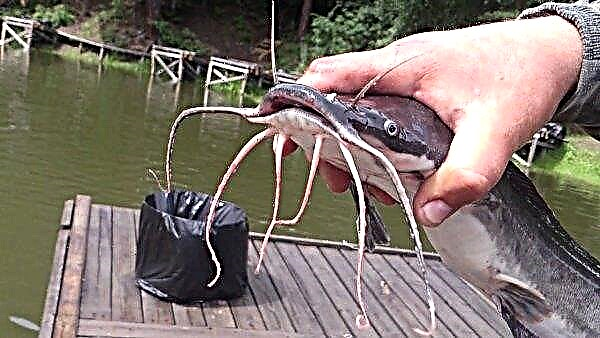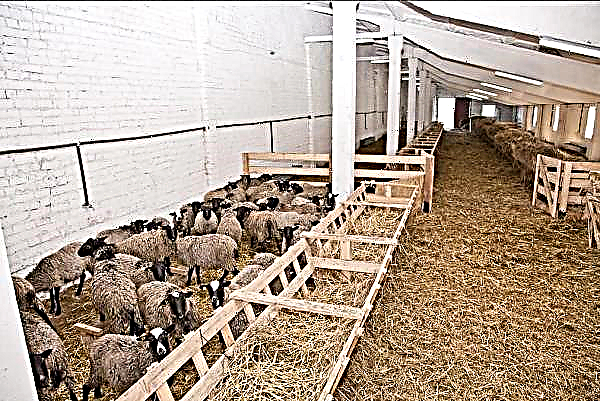An unusual flower, nicknamed by the people the Decembrist, pleases the eye with lush bloom on cold winter days. Although the plant is considered quite unpretentious in care, you cannot call it simple: a flower often suffers from various diseases caused by improper conditions for growing. In this article, we will consider in detail the main diseases of Decembrist and methods for their treatment.
Problems when growing Decembrist and their solution
When growing a Decembrist, like any other indoor plant, it is important to know and follow the basic rules of maintenance, balanced watering, be able to properly feed the plant, propagate it and transplant.
But compliance with almost all conditions sometimes can not protect the flower from the harmful effects of infections and pests. To understand what to do and how to save zygocactus, you need to establish the cause of the disease. A condition in which a plant seems to die can manifest itself in different ways and be provoked by many factors.
Sluggish leaves
If the Decembrist fades, the leaves on it wrinkled, became soft, then this is one of such manifestations.
The most common causes of this condition are the following factors:
- the location of the flowerpot near the batteries from which dry hot air comes from;
- unbalanced watering of the Christmas tree: both a lack of moisture and its oversupply negatively affect the state of zygocactus;
- lack or excessive abundance of lighting in the place of cultivation;
- fungal diseases;
- damage to the root system;
- death of roots due to irrigation with cold water at low air temperature, significant overheating in the sun or fertilizer with highly concentrated top dressing.
 Systematic spraying of the Decembrist, determining it in a place with more suitable conditions for cultivation and periodic replacement of the soil in which it is grown, can help to avoid such symptoms.
Systematic spraying of the Decembrist, determining it in a place with more suitable conditions for cultivation and periodic replacement of the soil in which it is grown, can help to avoid such symptoms.Important! Staying in a dark place for about a day before tying his kidneys will help reduce the risk of plant wilt.
Thin leaves
Sometimes the Decembrist is characterized by the presence of thin leaves. This can be triggered by the presence of parasites in the soil mixture and a lack of nutrients necessary for the harmonious development of plants.
In order to eliminate and avoid this fact in the future, you need to periodically transplant the flower into new soil, feed it with mineral and organic fertilizers, pay more attention to balanced watering.
Leaves turn yellow
Often, due to insufficient humidity of the air and soil, yellowing of the leaves of the Decembrist occurs. To avoid this, you need to more seriously approach the issue of watering and help increase the level of humidity in the room.
Systematic spraying of a Christmas tree with warm water from a spray bottle will help reduce the negative impact of yellowing factors.
The lack of trace elements and other nutrients in the soil can also cause yellowing of the leaves of zigocactus. To resume the normal state of Decembrist, it is necessary to fertilize the earth with mineral and organic additives.
Also, the appearance of yellow leaves on the flowerpot is possible due to the defeat of its scab.
Leaves fall
Decembrist never drops leaves for no reason.
Most often, they fall off due to the occurrence of provoking factors, which include:
- pest damage (spider mites and others), get rid of which will help a thorough examination and treatment of the flowerpot with special drugs;
- nutrient deficiency, eliminate which will help spraying with fertilizing for epiphytic cacti or a complete transplant of a plant into another soil mixture;
- stresstransferred by the Christmas tree as a result of a sharp change in temperature, draft, a very low level of humidity, late transplant. Normalization of the state and conditions of plant maintenance will help to eliminate the consequences.
The plant dries
A Decembrist with signs of drying is most often found in the absence of regular watering, low humidity in the room. Zygocactus also dries due to being in the scorching sun or near heated appliances.
The normalization of the irrigation process, the increase in air humidity, as well as the determination of the flowerpot in more suitable conditions of detention - in a lit, but shaded place without constant access of hot air can help correct the situation.
Rotten roots
When caring for the Decembrist, you can sometimes observe the following symptoms:
- individual segments begin to fall;
- shoots brighten;
- leaves and stems soften;
- buds and flowers take on a limp look;
- the earth around the plant turns sour.
These are sure signs of decay of the roots of the Decembrist.
Provoke this process:
- excessive soil moisture;
- the presence of stagnant water in the stand;
- watering plants with cold water.
To fix the problem:
- remove damaged segments to healthy areas as soon as possible;
- carry out the cleaning of the roots from the soil and their washing under running water;
- eliminate the affected processes of the root system that differ from healthy ones in color and the presence of delamination;
- sprinkle healthy parts of the root with carbohydrate powder;
- if there are much fewer healthy roots than before the defeat, you need to plant the plant in a smaller pot, it is better to replace the soil mixture;
- before transplanting, it is recommended to treat the cactus with a growth stimulator.
Important! In the presence of softening of the lower cylindrical shoots of the Decembrist, it will not be possible to save.
The roots can also rot when the raw soil around them is supercooled. To save zygocactus, it should be introduced into a heated room for heating. Most often this is enough, but if the measures do not work and the roots begin to rot, then the plant needs a transplant.
Treatment of other diseases of Decembrist
The unwillingness of a zygocactus to bloom is not such a rare occurrence.
This is often due to:
- irregular watering;
- improper lighting;
- tight pot cultivation and transplant needs;
- low soil nutrition;
- unpreparedness of the plant for the flowering process.
In order for the zygocactus to bloom, the root cause should be eliminated: normalize watering, provide sufficient lighting, transplant into a large pot, and feed the soil.
In order to prepare the Christmas tree for flowering, you must:
- in the autumn period, create conditions for complete rest by defining it in a cool room;
- provide minimal watering and do not fertilize;
- at the end of autumn, put the zygocactus in a fairly lit place, starting to water it;
- it will not be superfluous to rotate the flower around its axis to obtain uniform illumination of all its sides.
As a result of such manipulations, the zigocactus will “cheer up” and will soon give the first buds. In order for the Decembrist himself to bloom well in the future, you need to organize the right care for him:
In order for the Decembrist himself to bloom well in the future, you need to organize the right care for him:
- in the winter, additional highlighting will not be superfluous;
- when the plant blooms, it is unacceptable to touch it at this time, rearrange, rotate, and especially cuttings;
- during the formation of buds, sharp changes in temperature conditions are negatively reflected on the zygocactus;
- in a room with cool air, the flowering time is long, the optimum temperature for plentiful flowering is +16 degrees;
- a narrow-shaped pot is suitable for flowering.
Important! The falling flowers of a flowering purchased Decembrist is not a reason for panic: in this way the zygocactus adapts to a new place.
Subjected to Decembrist and fungal diseases - late blight, fusarium. Infection often occurs through a soil mixture that is not sanitized before planting. First, the root is affected, later the plant turns pale and grayish, its segments disappear.
The fungicidal preparations Vitaros, Topaz, Maxim can help get rid of these problems. They should be used according to the instructions. After processing, you need to control the moisture level in the soil, preventing it from being wet. The soil before the next watering should noticeably dry.
Sometimes the decembrists begin to blush shoots. This is possible if the plant is exposed to direct sunlight. Sometimes, for this reason, erosion with redness may appear, indicating a burn of the leaves. In order to possibly restore the zygocactus to its original form and avoid similar in the future, you need to define it in a more shaded, but well-lit place.
In order to possibly restore the zygocactus to its original form and avoid similar in the future, you need to define it in a more shaded, but well-lit place.
Sometimes the appearance of redness on a Christmas tree indicates a lack of fluoride. To fix the problem, top dressing with potassium monophosphate (1/4 teaspoon per two liters of water) will help.
Important! The reddened young leaves of the Decembrist should not cause concern - they will grow up and turn green.
Christmas pests and their control
With proper care, the Decembrist is able to live for several decades. But over this long period, it can be attacked by pests more than once, the main of which are spider mites, mealybugs, and insects.
Spider mite
If a rust-colored plaque and a cobweb appear on the Decembrist, then this is the first sign of a spider mite occupying the plant. This insect can thoroughly harm the zygocactus if it is not detected and taken in time.
A careful examination will help identify a spider mite - a small pest of a yellowish, brownish or scarlet shade. These pests are attracted by the dryness of the air in the environment. To get rid of a spider mite, you should:
To get rid of a spider mite, you should:
- at the first symptoms, the plant should be washed with a solution of laundry soap, rinse, repeat the procedure, leaving for a couple of hours in a soap solution, rinse again, put on a plastic bag on the plant and leave it in this position for a week and a half. After a week, you need to repeat the course of treatment with a solution of laundry soap again, because after the first stage there may still be spider mite eggs;
- treat the plant with Fitoverm, Neoron, Actellik, process it again after three to four days;
- after the procedures, you need to moisten the air by spraying or put the plant in a container with moistened pebbles.
Did you know? There are zigocactus, the stem diameter of which is more than a meter, and they themselves are decorated with thousands of flowers.
Mealybug
When whitish lumps similar to cotton wool appear on the Decembrist, it becomes clear that the mealybug occupied the plant. This pest has a pink color with transverse lines, is a sucking insect. The dimensions of the mealybug - from 3 to 7 mm - allow you to notice it quickly enough.
His presence is indicated by:
- whitish, sticky mucus on the leaves;
- wilting and falling buds.
Getting rid of the mealybug is quite a long and difficult process. It consists in:
It consists in:
- spraying the plant with the insecticide "Aktara" or "Confidor";
- treatment with a solution obtained according to one of the popular recipes: dilute 25 g of mashed garlic in 1 liter of boiled water, leave for 6 hours, rub all parts of the plant with the resulting mixture; Stir 40 ml of olive oil in 1 liter of water and treat the entire plant with a cotton swab dipped in a solution; grate from 10 to 15 g of green soap and dilute in 1 liter of water, spray the Christmas tree.
All procedures should be carried out at least three times with an interval of a week.
Did you know? The botanical name Schigumbergera zigocactus is derived from the French cactus collector Frederic Schlumberger.
Shield
An insect, the size of which is not more than half a centimeter, and it is itself capable of sucking all the juices out of a Christmas tree, is called the insect shield. From its harmful effects, the Decembrist turns yellow and dries. With untimely help, the plant may die. The following methods can overcome the pest:
The following methods can overcome the pest:
- mechanical cleaning;
- treatment with a cotton swab dipped in a solution of karbofos, “Tanker” or “Ankara”;
- provide indoor air humidity of at least 60%;
- place the plant for a while under the sun, as they slow down the development of damage;
- treatment of plants with folk remedies: dilute 40 g of laundry soap in 1 liter of water, adding five drops of kerosene; finely chopped onion and pour in a glass of water, leave to infuse for a couple of hours, strain.
Did you know? Zigocactus are able to absorb excessive noise in the house and any other room.
Disease prevention measures
To avoid the health problems of the Decembrist, some preventative measures should be taken:
- monitor balanced watering; the water should be cold;
- periodically transplant plants into a new soil mixture;
- fertilize plants, but do not overdo it;
- provide normal lighting at the cactus site;
- maintain the optimal level of humidity in the room;
- systematically inspect plants for pests;
- remove wilted leaves in time;
- monitor the optimal temperature in the room, the temperature should not be very low;
- To eliminate the threat of manifestation of fungal infections, “Mikol” and “Bayleton” are used for the treatment.
Important! You can save the affected plant by means of re-rooting: pinch off some intact leaves, lower them in water for a couple of weeks until the roots appear and plant them in a new soil mixture.
Basic rules for the care of Decembrist
Caring for a Christmas tree is not particularly difficult if you approach the process with all responsibility and attentiveness. Simple rules of care are as follows:
Simple rules of care are as follows:
- provide zigocactus with sufficient lighting, but do not expose it to direct sunlight, from which it should be shaded;
- try to place the plant on window sills that go to the east side;
- prevent sudden temperature changes;
- suitable temperature conditions for growth and development - from +18 to +25 degrees, during flowering - from + 16 to +20 degrees, before the flowering process - from +12 to +16 degrees;
- monitor a sufficiently high level of humidity (not less than 60–70%), you can correct the situation if you spray the plant, put it in a container with a wet drainage layer;
- Decembrist conditions should be as close to natural as possible;
- during flowering, zygocactus does not need to be touched, moved, rotated once again, because it can get rid of buds;
- in the warm season, the most suitable for zigocactus is growing on balconies, in garden plantings in a shaded and protected from drafts, wind gusts, direct access to the sun;
- after the flowering ceases and until spring, zygocactus is better defined in a room with a low temperature;
- Zigocactus should be watered regularly; water should be defended and allowed to warm up at least room temperature;
- Christmas tree needs to be regularly fed monthly;
- the plant needs pruning, but it is better to remove unnecessary parts manually;
- at the end of winter, it is recommended to plant zigocactus annually in new soil, in pots a little more than the previous ones, adult plants are replanted as necessary, but more often than once every 3-4 years;
- when transplanting, there should be a drainage layer at the bottom of the pot;
- a light and loose soil mixture should consist of 2 parts of peat, 1 part of fertile land, 1 part of coarse sand, in order to disinfect the soil mixture, it is worth adding a small amount of crushed coal, to increase water permeability - crumb brick.
Did you know? The Decembrist is able to delight with its amazing flowering from two to three decades.
Decembrist is particularly beautiful and attractive, and with proper care will not bring any trouble to their owners. But unpleasant moments from the attack of pests and the defeat of some diseases are possible even with proper care. Therefore, you need to be attentive to your pets in order to eliminate the threat in time, and most importantly - to know how to do it.

